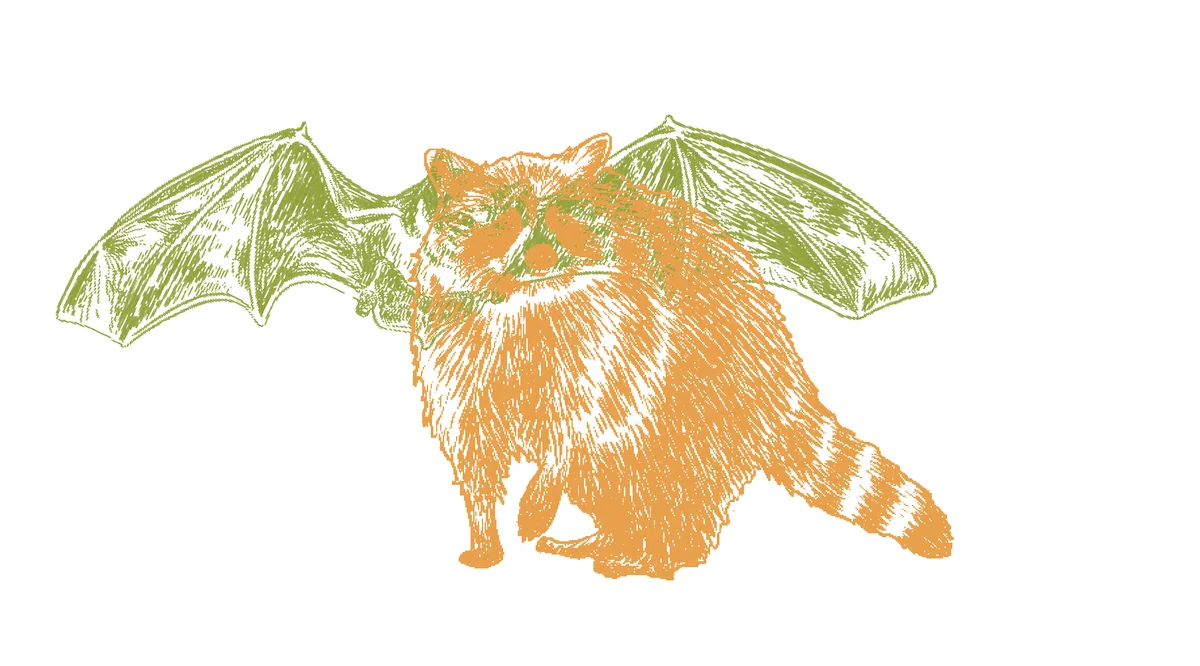
As October dusk sets in across Vancouver, many students prepare themselves for the evening, returning home and winding down for the night. Between abandoned sheds and hollowed trees, other creatures are stirring. As the city’s daytime inhabitants drift off to sleep, their nocturnal neighbours wake, venturing out unseen into the nighttime air.
Raccoons, bats, coyotes and skunks are just a few of the nocturnal wildlife that inhabit Vancouver’s urban environments, roaming empty streets in search of their next meal.
Nesting and feeding throughout neighbourhoods and parks, these creatures often come into close contact with people, resulting in interactions that are not always peaceful. This is largely the result of growing urban environments, which fragment the habitats of indigenous wildlife. Animals are forced to flee deeper into their natural habitats or to adapt to these concrete jungles.
With an increase of170,000 people between 2016 and 2021, Vancouver represents one of the quickest-growing regions of North America. As interactions between wildlife and humans become more and more commonplace, it is important to investigate why some animals are able to adapt and how their behaviors change, especially for those we may not always see.
UBC research is looking to better understand how our nocturnal neighbours' — specifically raccoons and bats — lives and cognitive abilities are impacted by urban development.
Dr. Sarah Benson Amram’s lab focuses on how the cognitive capabilities of animals in human-centred environments play a role in their ability to survive. Her PhD student Hannah Griebling is investigating the furry bandits we often find in our alleyways: raccoons.
By setting up experimental devices in the backyards of Vancouver residences, her research team hopes to gauge raccoons’ intelligence to help us understand why they’ve been so successful in urban environments.
These consist of raccoon ‘obstacle courses’ designed to test different types of cognition like inhibitory control, spatial memory, quantity discrimination and tactile sense. By analyzing what raccoons can do, the team can better understand which abilities have allowed raccoons to thrive in our backyards.
While most people only consider raccoons' intelligence when they use it to get inside trash bins, Griebling's research encourages us to take a second look and consider why they're so smart — and how they might be getting smarter.
"What's most important to me is finding out by learning more about raccoon behaviour and cognition, and human behaviour towards raccoons, finding the best ways that we can coexist with urban wildlife, including raccoons and other species,” said Griebling.
Spreading urban environments not only affect the nocturnal animals on land, but those in the air as well.
Aaron Aguirre is a UBC master's student in the M2L2 and CHAN labs. Aguirre's work focuses primarily on bat activity, diversity and the impacts of human-created environments. As Aguirre described, bats will nest and raise their young in man-made structures, venturing out across open spaces like parks to catch food.
Aguirre uses ultrasonic acoustic detectors to listen in on bat echolocation as well as nets to catch, examine and track bats. By tagging some bats with trackers, the research team can examine where the bats are spending their time.
At night, Vancouver’s parks and green spaces are used by around 13 species of bat species that call the Lower Mainland home.
These bats nest in man-made structures and share environments with people, helping provide important ecological services like pollination and pest control. The little brown myotis bats in Vancouver are capable of consuming up to 600 mosquitoes per hour, helping manage insect populations.
While bats have a bad reputation as a spooky public health hazard, less than 0.5 per cent carry rabies.
“I'm hopefully going to take my findings and bring it to [urban planners], that way they can implement them,” said Aguirre. He hopes they can take into account the preferences of nocturnal animals like bats when designing parks and green spaces.
Aguirre mentioned the importance of connecting with the public, “and letting them know the benefits of bats and being advocates … trying to reverse some of the bad reputation they’ve gotten from the media.”
Aguirre and Griebling spoke about the importance of improving public perception of the creatures that share our urban habitats. Both species play important roles in their ecosystems. Living primarily in anthropocenic environments means that they have a high probability of coming into contact with people.
“[Raccoons] are not out to get us or doing these things on purpose, and we should really commend them for doing so well and adapting so well living alongside us,” said Griebling. "They're also a great opportunity to see wildlife in your own backyard.”

